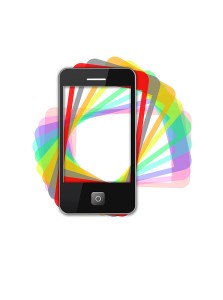While Apple Inc. (NASDAQ:AAPL) astounds the world with new software at the Worldwide Developers’ Conference (WWDC) this morning, the United States Patent & Trademark Office, or USPTO, issued 62 granted patents to the Cupertino company. Tuesday is the day when the USPTO issues granted patents, while new patent applications are published on Thursday of each week. Today, Apple Inc. was granted a patent, #8,742,885, which describes a remote control using an area of unstructured touch sensitivity on an ordinary touch screen.
The patent, entitled “Directional Touch Remote,” describes a method of transforming any touchscreen device, including iPhones, iPods, and personal digital assistants (PDAs), into a complex remote control with an intuitive interface. The description notes how current devices often use remote controls of vast complexity, involving the use of 50 or more buttons. Finding a control amid this plethora of buttons is time-consuming and requires the user to focus on the remote control, rather than the device being controlled.
 Additionally, the chance for mistakes becomes higher as the number of buttons rises and their size decreases in order to cram them all onto one remote control. It is quite easy to “fat finger” entries on a full-sized keyboard, where each key is large enough to comfortably accommodate a human finger. With the tiny keys on remote controls, errors made by pressing the wrong button or several buttons at once become basically inevitable.
Additionally, the chance for mistakes becomes higher as the number of buttons rises and their size decreases in order to cram them all onto one remote control. It is quite easy to “fat finger” entries on a full-sized keyboard, where each key is large enough to comfortably accommodate a human finger. With the tiny keys on remote controls, errors made by pressing the wrong button or several buttons at once become basically inevitable.
The patent envisions a totally new approach, in which part of a touchscreen becomes an “unstructured” touch sensor that picks up gestures rather than keyboard-style inputs. Thus, the user could program a diverse set of commands into the screen and control the device quickly and intuitively with gestures. Indeed, it would not be necessary to even look at the screen most of the time, with finger motions replacing keyboard entries.
The chance of errors would decrease and there would be no time wasted in seeking the right button or combination of buttons to achieve a given result. This would give a control interface with a much more organic, straightforward input style that could be learned and mastered quickly, while still offering exactly as much complexity and variety as was needed.
The inventors applied for the patent on May 1st, 2009 with Apple Inc. (AAPL) as the assignee. Four inventors are listed, including Rainer Brodersen, Alan Cannistraro, Jeffrey L. Robbin, and Gregory Charles Lindley. Mr. Brodersen began his working career some 25 years ago at Spruce Technologies before moving to Apple, where he worked as Chief Architect. He has since moved on to co-found Fitview Inc., where he is currently Chief Technology Officer.



